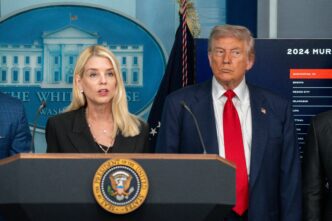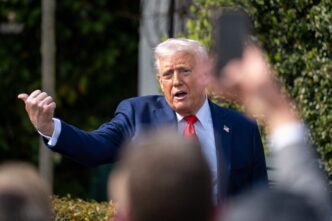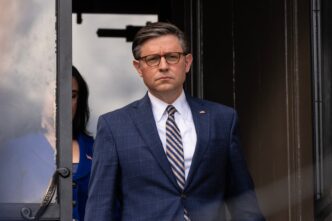Executive Summary
The Story So Far
Why This Matters
Who Thinks What?
The White House budget office has directed federal agencies to prepare plans for mass firings in the event of a government shutdown, signaling a significant escalation in the ongoing funding standoff with Democrats as a critical deadline approaches next week. This move by the Trump administration provides the first public glimpse into its internal operational planning, contrasting with past administrations’ more transparent approaches, and is seen as an attempt to accelerate presidential priorities should a funding lapse occur.
Escalating Standoff
The memo from the Office of Management and Budget (OMB) arrived as the White House seeks to intensify pressure on Democrats ahead of the impending funding deadline. It suggests President Trump would leverage a shutdown to advance his agenda, a scenario Senate Democratic Leader Chuck Schumer and other Democratic lawmakers expressed concerns about earlier this year.
While Schumer had previously advocated for backing a GOP funding bill to keep the government open, Democratic leaders are now vowing to maintain their demands. Trump administration officials appear to be trying to shake this resolve by demonstrating how they would maximize the impact of a prolonged closure.
Internal Dynamics and Workforce Reductions
The current standoff is seen as an opportune moment for OMB Director Russ Vought and other administration officials who have long pushed for federal workforce cuts. Sources familiar with internal dynamics suggest this could provide a chance to implement government-wide reductions, which have previously proven politically unpopular, while simultaneously attributing blame to Democrats.
This Wednesday night memo aligns with the Trump administration’s consistent efforts since its first day in office to reshape the federal workforce through executive orders, guidance memorandums, and regulatory proposals. These efforts have targeted the career employee classification system and the protections that have defined it for decades.
Douglas Holtz-Eakin, president of the American Action Forum and a long-time GOP policy adviser, commented that while firings or reductions could happen anytime, “it’s now part of rhetorical positioning that the White House has chosen.”
Congressional Reactions
On Capitol Hill, Republican Senator Bernie Moreno of Ohio warned of “permanent cuts,” including layoffs, if a potential shutdown is prolonged, placing the blame on Democrats. He argued that the onus is on congressional Democrats to accept the House-passed stop-gap funding package to avert a shutdown.
However, not all Republicans are eager to center the party’s shutdown messaging on layoff threats. Senator Susan Collins of Maine, who chairs the Senate spending panel, stated that federal employees “should not be treated as pawns” in the funding dispute. Some Republican strategists fear that the White House’s rhetoric and layoff threats could weaken the GOP’s advantage in the standoff.
GOP strategist Doug Heye cautioned that while Trump will exert power and pain, “That could backfire — and there’s certainly the risk of that especially if we start seeing firings in areas that we haven’t seen before that directly impact voters’ lives.”
At the White House on Thursday, Trump focused his criticism on Democrats, accusing them of repeatedly seeking to extend enhanced Affordable Care Act subsidies to fund healthcare for undocumented immigrants. When asked about his administration’s mass firing plans, Trump immediately pivoted, stating, “They never change. They want to open up the borders.”
Democrats Double Down
Despite the threat of mass firings, senior aides from both parties in Washington acknowledged they were not surprised by Vought’s directive. For Democrats, many of whom now view a shutdown as likely inevitable, the memo has only hardened their resolve not to yield to the GOP’s funding plan without a win on healthcare.
House Minority Leader Hakeem Jeffries dismissed Vought’s memo as a scare tactic, calling the OMB director “completely and totally out of control.” Democrats expressed confidence that voters, including federal workers themselves, would blame Trump and his budget office for any layoffs, not their party.
The fate of essential federal workers, such as those at airports, remains a key concern. Sources indicate that TSA and air traffic control workers are expected to be deemed “essential” and would continue to work, though without pay, until a shutdown concludes.
Echoes of Past Directives
The OMB memo circulated on Wednesday contains language similar, and in some places identical, to a February directive signed by Vought and the acting head of the Office of Personnel Management. That previous guidance instructed agencies to focus on “the maximum elimination of functions that are not statutorily mandated while driving the highest-quality, most efficient delivery of their statutorily-required functions.”
The February directive was notable for the sheer scale of the “large-scale” reductions in force it detailed and its sharply critical tone towards the federal workforce. It explicitly directed agency officials to use their shutdown contingency plans from the first Trump administration to guide the development of the mandated reductions.
While the administration’s legal path for such actions had been unclear due to injunctions, Supreme Court and circuit court orders this summer in separate cases have provided a potential roadmap. Harvard Law professor Jack Goldsmith described this approach as an “asymmetric weapon” for an administration willing to downsize against congressional shutdown threats, underscoring that the OMB threat is not an empty one.








